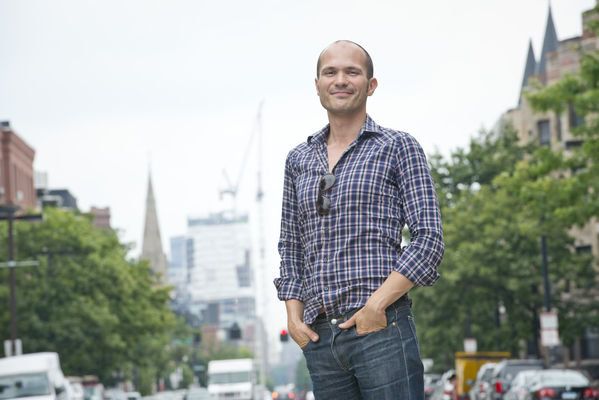3Qs: Architecture and the Olympic games

The Summer Olympics begin on Friday in London, where a unique series of structures have been designed to host competitions and house athletes from all over the world. We asked Ivan Rupnik, an assistant professor of architecture in the College of Arts, Media and Design, to explain architecture’s role in the Olympics.
Is there a common theme that ties together a city’s Olympics?
There are definitely common trends in the architectural designs of any Olympics, including the branding of the Olympics and the unique logo for each host city. But there isn’t a plan in which the organizers agree to have a unifying architectural theme. There hasn’t been a conscious architectural theme for the Olympics, with the possible exception of the 1936 Summer Olympics in Berlin, where Adolf Hitler and his advisors carefully defined the architectural language for the event.
Local talent has designed many of the facilities for the London Olympics, so they share that common bond. London, in general, is very much a hotbed for a lot of what is going on now in the architectural world and has a very strong architectural scene that a lot of past host cities does not.
Many structures, such as stadiums and housing, are designed specifically for the Olympics but remain as part of the city. What factors into that double use decision?
For a long time, structures built for festivals, exhibitions and the Olympics were thought of as temporary architectural experiments and then torn down. Some of the most important revolutions in architectural design happened at these fairs in the 19th century. The Eiffel Tower, for example, was supposed to be on display only for the 1889 World’s Fair.
The architecture of the Olympics, like that of other ‘festivals,’ was frequently seen as temporary. An important shift in this thinking occurred during the 1992 Olympics in Barcelona, where an architect by the name of Joan Busquets worked with the explicit idea that all the things that would be built for the Olympics should benefit the city after the event. The structures, he said, should not only benefit the city as specific programs, but as strategic moves that would help direct development of entire neighborhoods. The idea was to build a stadium in a part of the city that needed development, thus changing the whole neighborhood. That was something that may have occurred prior to 1992, but it was never so consciously planned as in the Barcelona Olympics.
What can Olympic architecture and design help a city communicate to the rest of the world?
There’s a term in architecture called “the Bilbao Effect,” which was coined after Frank Gehry designed the Guggenheim Bilbao museum. The museum became a kind of model for allowing a certain kind of architectural experimentation and served as a symbol of progress and openness. This model is something that cities have used in the past. During the Festival of Britain in the 1950s, for example, the British used it to declare the end of the lean postwar reconstruction years.
The Olympics now offer a way for communities to establish themselves as world cities. Since the 90s, world cities have invested in contemporary culture. Some of this strategy is designed to boost revenue — the most profitable form of tourism is cultural, far more than sea-sun-fun tourism, and has the least overhead.
These major events, which require years of planning, design and investment, are a way for cities to present themselves, to say they have arrived. It is something that London wants to restate and something we’ll see again in four years, when Rio de Janeiro, Brazil, hosts the first Olympic Games in South America.




